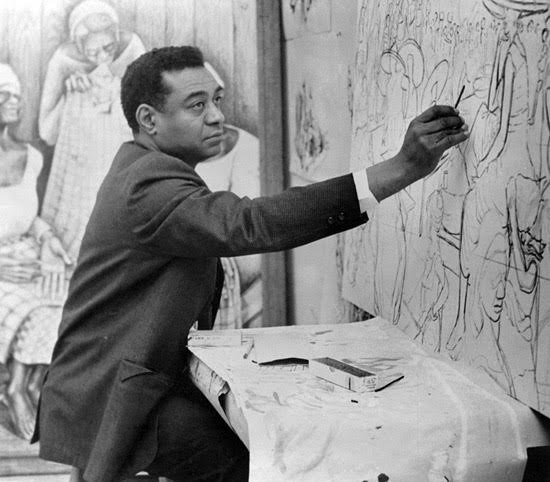Highland Neighborhood Association

Highland Neighborhood Association, in Gastonia, NC, received an Inclusive Public Art Initiative grant from ZSR.
The Highland Neighborhood Association (HNA) has been working for nearly seven years to address upstream issues negatively impacting health and well-being in the neighborhood through the development of systems-level interventions based on the voice of community members. The Highland Collaborative is a long-standing partnership of stakeholders focused on supporting the HNA. With community engagement practices that center neighborhood voices built into the way they have collaborated for years, these partners will uplift Highland’s unique history through layered imagery in the form of a “Walk of Fame Pathway” at the Erwin Center in Gastonia, NC.
Like so many African American neighborhoods in the United States, the Highland Neighborhood fell prey to urban renewal in the 1970s-80s, when the heart of its business district was ripped out to make way for government buildings including a jail, courthouse, and social services building. Highland’s once-thriving business community, known as Black Wall Street, was annihilated during this time.
There is a long history of excellence in art, public service, education, healthcare, and entrepreneurship in Highland that is not widely known. While further community engagement will identify the myriad of people and stories that will be highlighted through the artwork, one figure of central importance is John Thomas Biggers. Biggers was an African American artist/muralist who came to prominence after the Harlem Renaissance and close to the end of WWII, creating work that was critical of racial and economic injustice. He served as the founding chairman of the art department at Houston’s Texas State University for Negroes (now Texas Southern University), in 1957 was the first African American artist to travel to Africa with an UNESCO Fellowship, and in 1994 illustrated Maya Angelou’s poem “Our Grandmothers.” Despite his illustrious career, he remains little-known in North Carolina, particularly in his hometown of Gastonia. His childhood home in Highland, which remains in his family today, is less than a half mile from the proposed art installation site.
Selected for this sculpture project is the two-artist team of David Wilson and Pamela Underwood. The installation site, the Erwin Center, is a well-utilized community center and park in the heart of Highland. Working with the park’s built and natural landscape, the team will create an integrated experience with sculptures along a 155-foot pathway. The artist team imagines opportunities for community involvement in the creation of the artwork, and the project stakeholders intend to develop an interactive virtual tour utilizing QR codes to ensure that the stories are accessible.